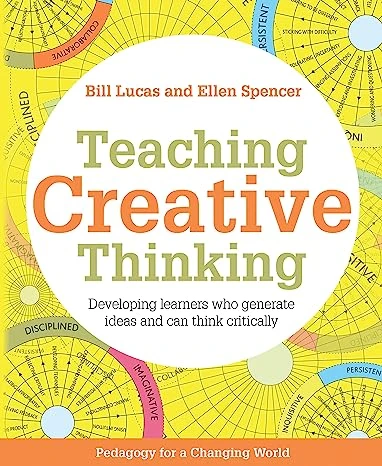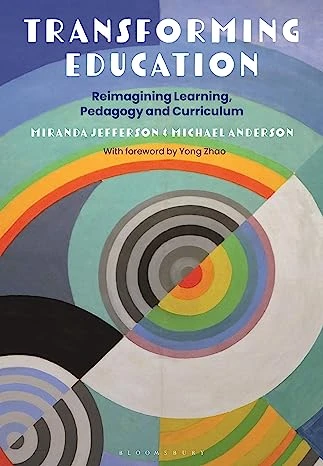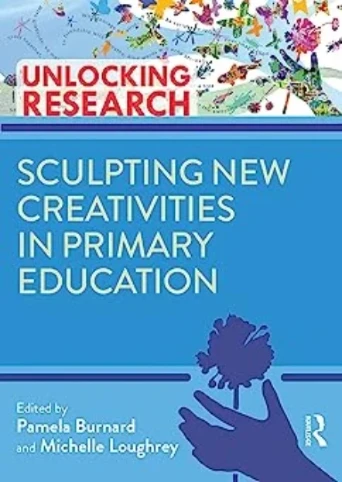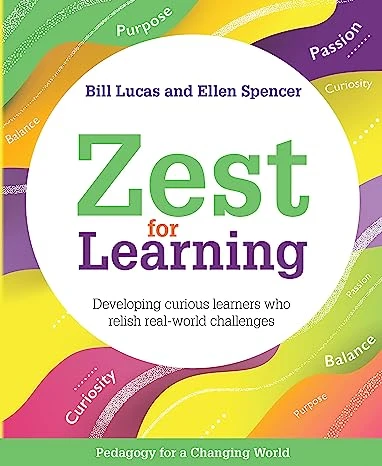Books on Creative Thinking in Education
In this blog, we provide a list of some of the best books on creative thinking that have come out in recent years. This list is made with educators in mind, so it leans towards books that focus on the implementation and practice of creative thinking in schools and is less about general creative thinking.
If you are an educator looking to increase your knowledge on current creative thinking best practices, you are looking for ideas of how you might be able to bring more creative thinking into your classroom, or you are simply looking to deepen your knowledge on this increasingly visible and important field, then this is the list for you!
1. Teaching Creative Thinking: Developing Learners Who Generate Ideas and Can Think Critically, Co-Authored by Bill Lucas and Ellen Spencer

Teaching Creative Thinking is the first title in the three-part Pedagogy for a Changing World series, founded upon Lucas and Spencer’s philosophy of dispositional teaching a pedagogical approach which aims to cultivate in learners certain dispositions that evidence suggests are going to be valuable to them both at school and in later life. A key capability is creative thinking, and, in 2022, one of the guardians of global comparative standards, PISA, is recognising its importance by making creative thinking the ‘innovative assessment domain’ to supplement their testing of 15-year-olds’ core capabilities in English, maths and science.
In this extensive enquiry into the nature and nurture of creative thinking, the authors explore the effectiveness of various pedagogical approaches including problem-based learning, growth mindset, playful experimentation and the classroom as a learning community and provide a wealth of tried-and-tested classroom strategies that will boost learners’ critical and creative thinking skills. The book is structured in an easy-to-access format, combining a comprehensive listing of practical ideas to stimulate lesson planning with expert guidance on integrating them into your practice, followed by plenty of inventive suggestions as to how learners’ progress can be assessed and tracked along the way by both the pupil and the teacher.
Find out more about this book, co-authored by the GIoCT Chair of the Advisory Board, Bill Lucas, and purchase it at the amazon link here.
2. Transforming Education: Reimagining Learning, Pedagogy and Curriculum, Co-Authored by Michael Anderson and Miranda Jefferson

Working away from trends in government policy, this book takes a future-oriented re-imagining of schools with a focus on four innate human capacities: collaboration, critical reflection, communication and creativity. The authors draw together examples of practice from around the world to provide a reimagining of education. They show how our schools can be sustainably transformed to be places of support, challenge and joy in learning, responsive to students’ needs and the needs in our workplaces and wider society. Readers are empowered to use knowledge and experience to create the reality they would like to see in their school, building engaged, innovative and active learning, pedagogy curriculum and leadership.
Find out more about this book, co-authored by the GIoCT Vice-Chair of the Advisory Board, Michael Anderson, and purchase it at the amazon link here.
3. Sculpting New Creativities in Primary Education (Unlocking Research), Co-Edited by Pam Burnard and Michelle Loughrey

This book introduces the new term ‘creativities’ with cutting-edge examples of creativities research that has influenced the thinking and work of teachers and school leaders in their practice. Co-edited by one of the leading international experts in creativity and the arts, this book is packed with imaginative ideas and practical classroom suggestions underpinned by theory and research to help teachers become research-informed and research-generating.
Sculpting New Creativities in Primary Education will inspire us, invite us to think, and share ways in which research is informing and enabling a role for new and creative practices in primary education. Each chapter is collaboratively written by an academic and a practicing teacher covering areas such as: creative spaces, intercultural and interdisciplinary creativity, art, wellbeing, mathematics, STEM and leadership creativities. It importantly highlights the need to inspire, shape and unfold change-making practices that (re-)invigorate, (re-)empower, and (re-)position primary education practice.
Drawing from projects originally conducted both in the UK and beyond, this revolutionary book invites teachers, teaching assistants and school leaders to co-create ways to unlock research together as mutually informative ways of authoring change.
Find out more about this book, co-edited by the GIoCT Member of the Advisory Board, Pam Burnard, and purchase it at the amazon link here.
4. Zest for Learning: Developing curious learners who relish real-world challenges, co-authored by Bill Lucas and Ellen Spencer

Part of the Pedagogy for a Changing World series, this book explores a key capability for students to develop, zest: the curiosity and desire to experience new things. Zest for Learning offers a powerful new synthesis of thinking about what it takes for young people to flourish both in education and in the wider world, especially at a time when preparing them for life beyond school often calls for brave leadership.
In this book Bill and Ellen offer a framework for zest: a practical guide for teachers, underpinned by theory. They draw on a number of areas of knowledge and practice that each have something to contribute to the concept of zest for learning, bringing together ideas in concrete and actionable ways. Zest for Learning connects the co-curriculum with the formal curriculum, building both theoretical and practical confidence in the kinds of pedagogies which work well.
The authors also go further by presenting case studies that illustrate the successful integration of the co-curriculum with the formal curriculum at various educational institutions, and by providing an A to Z of practical ideas and activities for developing zest in young learners. Suitable for all teachers and leaders, in both primary and secondary settings.
Find out more about this book, co-authored by the GIoCT Chair of the Advisory Board, Bill Lucas, and purchase it at the amazon link here.
Honourable mention: Although this is not a book, this TED talk always makes us want to find new and better ways to impart and demonstrate creative thinking to young people around the world, so we include it here as inspiration for you to do the same: Do schools kill creativity? | Sir Ken Robinson
We hope this list proves useful. If you would like to find more resources, simply go to Reports and Guides – Global Institute of Creative Thinking (gioct.org) and you will find this a great starting point.
